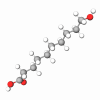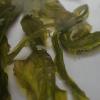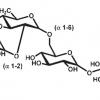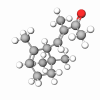Hydrolyzed Wheat Protein is a product of enzymatic or chemical hydrolyzation of vegetable protein wheat gluten. Its aqueous solution is a clear amber-yellow liquid with a slight odor, typical use level of 1-25%.
Hydrolyzed Wheat Protein provides amino acids and high glutamine levels, which form films with good tactile properties on drying. This ingredient is useful for high-quality formulations and has high skin tolerability.
Incorporated in skin and hair care products, Hydrolyzed Wheat Protein reduces skin irritation of traditional surfactants. This natural and versatile ingredient is compatible with almost all substances used in personal care products.
Hydrolyzed wheat protein is used in shampoo, conditioner, treatment (hair), leave-in, styling, body wash, body lotion, treatment (body), cleanser, toner, facial moisturizer, treatment (face), makeup foundation, mascara, lipstick, and color cosmetics. It is a safe ingredient, a non-irritant for skin and eyes, and a hypoallergic (low sensitization profile).High Molecular Hydrolyzed Wheat Protein
The high molecular wheat protein (MW=500,000) is used in hair and skin care applications for its skin-firming and curl-enhancing effects. Those properties have been proved in separate performance tests.
In studies conducted in-vivo on the mechanical properties of the skin, skin treated with a 1% active aqueous solution of high molecular hydrolyzed wheat protein undergoes a substantial decrease (-6.4%) in extensibility—quantitative data that is consistent with skin tightening or firming action.
A separate in-house study evaluated high molecular hydrolyzed wheat protein for its curl retention properties from three separate vehicles. In each of the systems, it was found to outperform the control throughout the entire period.
Amino acid composition
| Glutamic acid | 35 - 40 % |
| Proline | 12 - 16 % |
| Leucine | 6 - 8 % |
| Glycine | 6 - 8 % |
| Serine | 4 - 6 % |
| Phenylalanine | 3 - 5 % |
| Valine | 3 - 5 % |
| Alanine | 2 - 4 % |
| Isoleucine | 2 - 4 % |
| Aspartic Acid | 2 - 4 % |
| Threonine | 1 - 3 % |
| Tyrosine | 1 - 3 % |
| Arginine | 1 – 3 % |
| Histidine | 1 - 2 % |
| Lysine | 1 – 2 % |
| Methyonine | 0.5 – 1.5 % |
| Cysteine | 0.5 - 1 % |











